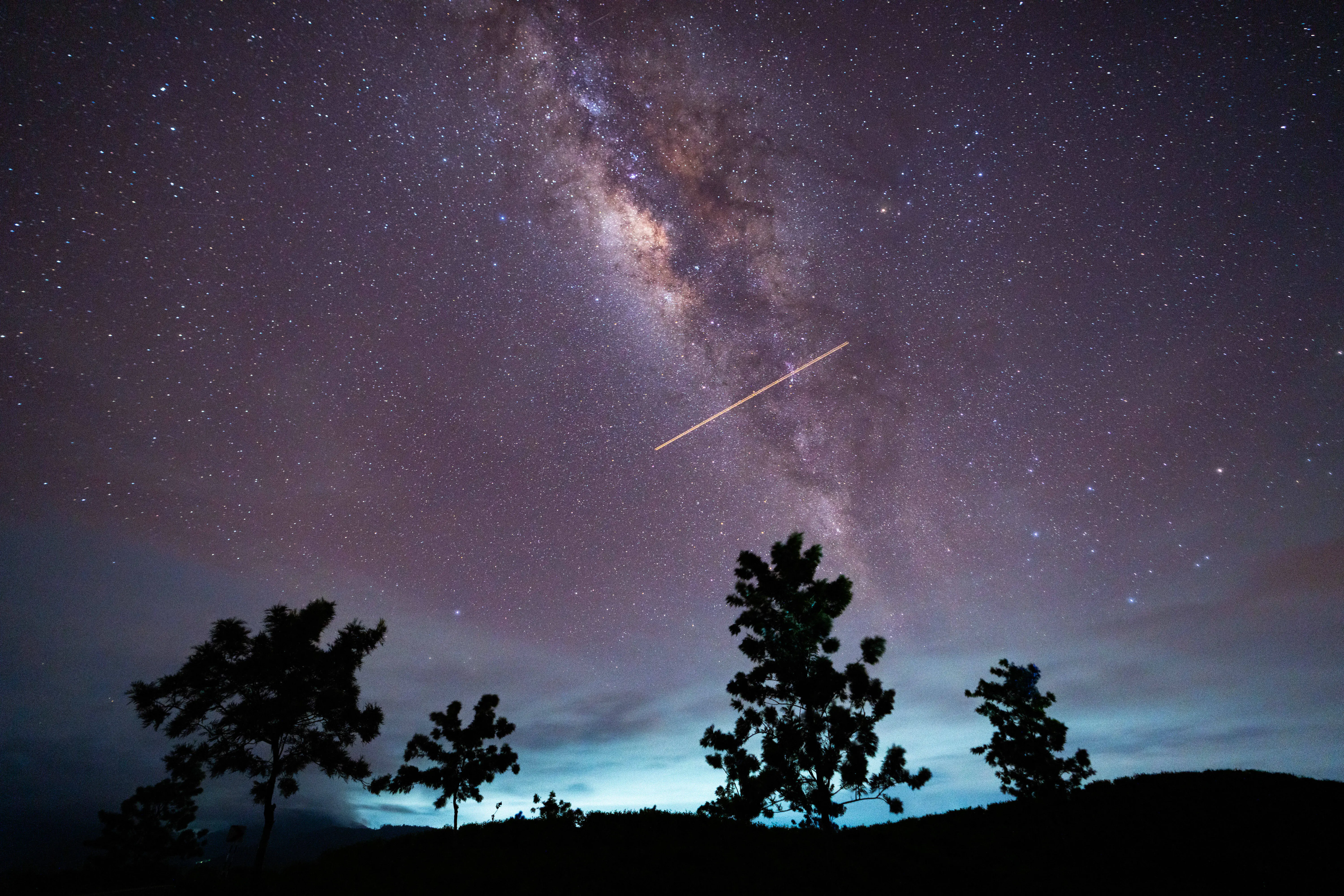When is the next meteor shower in 2025? Everything you need to know about South and North Taurid meteor showers
-
 A flight-illuminated path and the Milky Way are appearing in the night sky during the Eta Aquarids meteor shower, which is peaking in Ratnapura, Sri Lanka, on May 5, 2024. The Eta Aquarids Meteor Shower is an annual event caused by Earth passing through debris left behind by Halley's Comet. Named after the constellation Aquarius, these meteors are streaking across the sky at high speeds, creating a dazzling display of shooting stars. Best observed in the predawn hours away from city lights, it is a mesmerizing celestial event cherished by skywatchers worldwide (Image via Getty)
A flight-illuminated path and the Milky Way are appearing in the night sky during the Eta Aquarids meteor shower, which is peaking in Ratnapura, Sri Lanka, on May 5, 2024. The Eta Aquarids Meteor Shower is an annual event caused by Earth passing through debris left behind by Halley's Comet. Named after the constellation Aquarius, these meteors are streaking across the sky at high speeds, creating a dazzling display of shooting stars. Best observed in the predawn hours away from city lights, it is a mesmerizing celestial event cherished by skywatchers worldwide (Image via Getty)According to EarthSky, the next meteor showers to observe in 2025 are the South and North Taurids.
As per the American Meteor Society, the South Taurids are anticipated to peak at 13 UTC on November 5, 2025, whereas the North Taurids are likely to peak at 12 UTC on November 9, 2025.
Both the showers have been going on for a long time in October and November, and the Taurids can be seen particularly when their active periods overlap, thus making it possible to see meteors in both the Northern and Southern Hemispheres.
Observers can plan to watch around midnight, considering moon phases and sky visibility, as reported by EarthSky.
Next Meteor Showers in 2025: South and North Taurids Peak Dates and Viewing Guide
Timing and Duration of the Taurid Meteor Showers
According to EarthSky, the South Taurids are from September 23 to November 12, 2025, and the North Taurids are from October 13 to December 2.
During these times, our planet is traveling through the different meteor streams in the universe. The Taurid meteors are those whose radiant point is coming up in the early evening and reaching the highest positions around midnight.
Observers should be aware of local moon rising and setting times so that they can reduce the interference that comes from the moonlight.
The full moon is at 13:19 UTC on November 5, at the time of the South Taurid peak, and the last quarter moon is at 5:28 UTC on November 12, as per the information given by EarthSky.
Observing conditions and Meteor rates
With no moon to lighten the sky, the South and North Taurids would each generate around five meteors per hour, as stated by the American Meteor Society.
Theoretically, if the two shower streams were to superimpose perfectly, a watcher could count up to 10 meteors per hour. A meteor from the Taurid can be of a slow nature and also, for some time, quite a bright fireball.
The American Meteor Society mentions that the year 2025 brings about two weeks around November 5 during which the chances of fireballs are significantly higher.
Under normal circumstances, only 1% of the Taurid meteors are fireballs, but this figure can be elevated to 7% in the case of concentrated debris streams.
It is recommended by EarthSky that observers ought to take into account the moonlight as a source of interference and thus plan their viewing sessions at a time when the moon is lower in the sky or has already set.
Radiant and visibility
According to EarthSky, the radiant points of both the Taurid meteor showers are in the constellation Taurus. These points come up in the early evening and are at their highest positions around midnight.
Observers may use the charts provided by astronomical resources to find the radiant location. The Taurids can be seen from anywhere in both hemispheres, but the conditions for viewing depend on the local light pollution and whether the horizon is blocked.
The brightness of the meteors will be better during times when the moon is not shining, which is the case in 2025 because the full Super Hunter's Moon will be at the South Taurid peak, as per the American Meteor Society.
Additional notes for 2025 observation
The South and North Taurids overlapping activity is what makes late October through early November the main period for their observation, according to EarthSky.
The American Meteor Society suggests that observers willing to follow the meteor activity should organize their sessions around midnight and watch the sky for bright meteors.
Fireballs are the main phenomenon to look for. Calendars for sunrise and sunset in the local area can be very helpful in deciding the most suitable time for looking at the sky.
The 2025 meteor showers, comprising the Taurids, are yearly celestial events caused by the Earth's passage through cometary debris streams in space, as explained by EarthSky.
Stay tuned for more updates.
TOPICS: Meteor Shower, Meteor showers November 2025, North and South Taurids 2025, North Taurid, South Taurid, South Taurids peak time, Taurid meteor shower 2025 dates
- When and where to watch the Beaver Moon and Taurid meteor shower this week
- Draconid meteor shower to peak tonight on October 8, 2025 — here’s what skywatchers can expect
- When is the meteor shower tonight and how can you watch the Perseids at their peak?
- NASA shares tips to enjoy the Perseids meteor shower 2025 despite challenging full moon skies